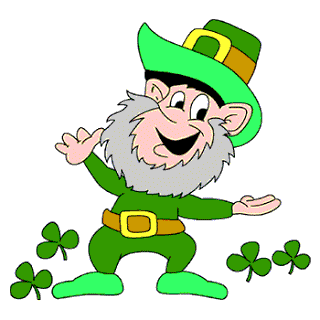
The History of Corned Beef and Cabbage
A hint: It's roots are Irish, but the Irish don't eat it..
Corned beef is not an Irish dish; it's connection with Saint Patrick's Day occurred in America in the Irish-American culture, How so? Well, the Irish make a similar dish using bacon, and Irish immigrants in America substituted corned beef in the late 19th century. According to the NY Times, "Pork products, particularly salted bacon, have historically played a much larger role in Ireland’s economy and gastronomy than beef has, said Marion Casey, a professor of Irish history at N.Y.U." So, in Ireland, you won't find corned beef and cabbage on the menu.
Ireland 1600's
In Gaelic Ireland, cows were a symbol of wealth and were only killed for their meat if the cows were too old to work or produce milk. Only the wealthy ate beef, and often the beef was “salted” to be preserved. Since it was preserved with salt of large grains of salt that looked like corn kernels, it was called "corned beef". Another sources say " an Old Germanic (P.Gmc) Word Kurnam which meant small seed of anything. Since a kernel of rock salt look like a wheat or oat kernel size it became known as a corn of salt.". Either way, "corned" means preserved with salt.
The Irish Cattle Acts of 1663 and 1667 had prohibited the export of live cattle to England, which created cheap, plentiful beef available for salted beef production and Ireland became a large producer of exported corned beef. Add to that, since Ireland’s salt tax was almost 1/10 that of England’s the obtained higher quality salt at lower prices, which made Irish corned beef the best on the world market.
Ireland 1800's
But the Irish themselves, being poor, due to oppression, famines and the 1845 potato blight crop failure, could not afford beef or corned beef . And to escape the famine and persecution, huge waves of Irish emigrated to the United States.
Irish-Americans
Irish immigrants bought their meat from kosher butchers, buying Jewish corned beef made from a brisket; which is different from the Irish corned beef. Vegetables which were plentiful and inexpensive at the time were potatoes, cabbage, carrots,, etc. thrown into a pot with cabbage and potatoes. The Jewish butchers in New York City were also new immigrants from Europe and they made corned beef according to their culture; which was a kosher brisket from the front of the cow. Both the cut and the process resulted in a a different (most say better) flavor and texture that we know today.
Today
Most commercial corned beef is a brisket soaked in a brine (salt) solution with additional sodium nitrate (saltpeter) added to preserve the pink color. For those looking to reduce the sodium nitrite (since it is correlated strongly with colon cancer), you can get a salted brisket without added sodium nitrate, or make your own (it takes about five days soaking in the fridge. The only difference is the meat will be gray, like roast beef, rather than pink. But it will taste the same. America's Test Kitchen and Cook's Illustrated explain how to do this.
So, while it may not be known in Ireland, Corned Beef and Cabbage has been a traditional Irish-American dish, especially on St. Patrick's Day, going back to the mid 1800's. And it is very tasty, so , pour a glass of green beer and enjoy it! You can find a more complete history of corned beef on the Smithsonian website here.
The best recipe for homemade corned beef and cabbage
We've got two recipes for homemade corned beef that are the best anywhere: they're easy to follow, fully illustrated, tested many times and taste great:
Traditional Corned Beef and Cabbage Recipes
- Traditional Corned beef and cabbage - the way most Irish-Americans make it in a pot on the stove
- Traditional Corned Beef and Cabbage made in a crockpot
- Natural Homemade Corned Beef and Cabbage - this one allows you to make your own corned beef WITHOUT the sodium nitrite which is found in store-bought corned beef briskets.
- Traditional Green Plaid Kilt in Adult (men or women) Standard Size - Perfect for St. Patrick's Day and Irish Festivals & Celebration
- Womens Kilt Mini Skirt, Green Plaid
- Women's short kilt: Lucky Irish Green St. Patrick's Day Plaid Kilt, One Size
- Lingerie Lace Babydoll 2-Piece Sexy Bra and Panty Sets
- Green leprechaun hat and green beard on Amazon
- Perfect for St. Pat's Day: Beautiful Green Summer Pleated Spaghetti Strap Sleeveless Camisole Loose Fit Tank Tops for Women on Amazon
- Attractive, Classy, Sexy Women's Leprechaun Costume on Amazon
- Women's green Lingerie Lace Babydoll Chemise Halter Teddy Mesh Nightgown on Amazon
- St. Patrick's Day T-Shirt for Boys & Girls "Lucky Charmer" on Amazon
- St. Patrick’s Day Shamrock Green Velvet Top Hat for Men & Women on Amazon